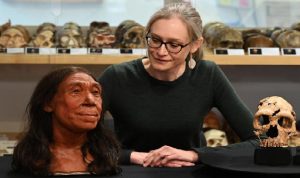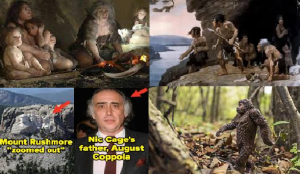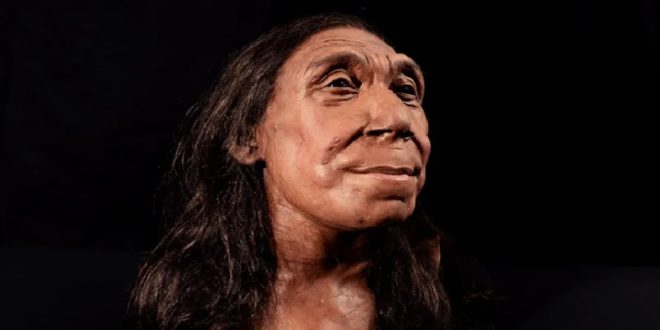03-05-2024
BAGHDAD: What would it be like to meet one of our closest human relatives from 75,000 years ago in the flesh?
Scientists have produced a remarkable reconstruction of what a Neanderthal woman would have looked like when she was alive.
It is based on the flattened, shattered remains of a skull whose bones were so soft when excavated they had the consistency of “a well-dunked biscuit”.
 Researchers first had to strengthen the fragments before reassembling them.
Researchers first had to strengthen the fragments before reassembling them.
Expert then created the 3D model.
The representation appears in a new documentary for Netflix called Secrets of the Neanderthals, which examines what we know about our long-lost evolutionary cousins, who became extinct about 40,000 years ago.
The sculpture puts a face to these people.
“I think she can help us connect with who they were,” said Dr Emma Pomeroy, a paleoanthropologist on the project from the University of Cambridge.
“It’s extremely exciting and a massive privilege actually to be able to work with the remains of any individual but especially one as special as her,” she told media.
The skull on which the model is based was found in Shanidar Cave in Iraqi Kurdistan. It is an iconic place where the remains of at least 10 Neanderthal men, women and children were unearthed in the 1950s.
When a British group was invited back by the Kurdish authorities in 2015, they soon chanced upon a new skeleton dubbed Shanidar Z that comprised much of the individual’s upper-body, including the spine, shoulders, arms and hands.
The skull was largely all present, too, but squashed into a 2cm (0.7in)-thick layer, probably by a rock that had fallen from the roof of the cave at some point in the distant past.
“The skull was as flat as a pizza, basically,” said Cambridge’s Prof Graeme Barker, who leads the new excavations at Shanidar.
 “It’s a remarkable journey to go from that to what you see now. As an archaeologist, you can sometimes get blasé about what you’re doing. But every now and then you are brought up short by the fact you are touching the past. We forget just what an extraordinary thing it is.”
“It’s a remarkable journey to go from that to what you see now. As an archaeologist, you can sometimes get blasé about what you’re doing. But every now and then you are brought up short by the fact you are touching the past. We forget just what an extraordinary thing it is.”
With permission of the local department of antiquities, the skull fragments were brought to the UK in blocks of sediment to begin the painstaking process of freeing them, stabilizing them and then putting them back together.
The complicated jigsaw puzzle took an archaeological conservator more than a year to complete.
The rebuilt skull was then surface-scanned and a 3D print given to Dutch artists Adrie and Alfons Kennis, who are renowned for their skill in creating anatomically faithful representations of ancient people from their bone and fossil remains but as intriguing as the sculpture is, with her rather contemplative expression, it is the original skeleton that holds the real value.
The team is pretty sure “she is a she”.
Pelvic bones would help the determination but those were not recovered with the upper-part of the body.
Instead the researchers have relied on certain dominant proteins found in the tooth enamel that are associated with female genetics. The slight stature of the skeleton also supports the interpretation.
How old? She probably died in her mid-40s, indicated again by her teeth which are worn down almost to the roots. (Int’l News Desk)
 Pressmediaofindia
Pressmediaofindia




